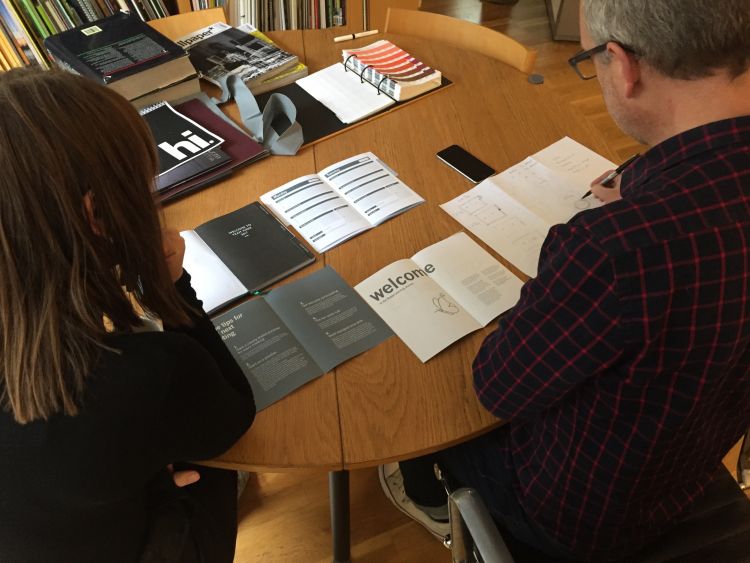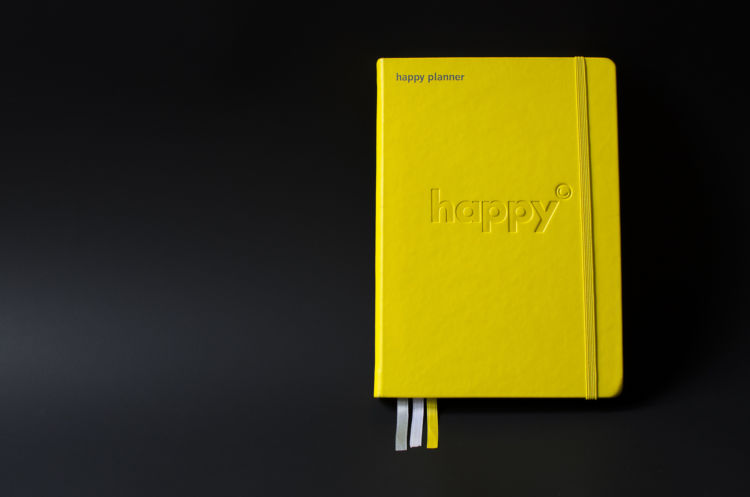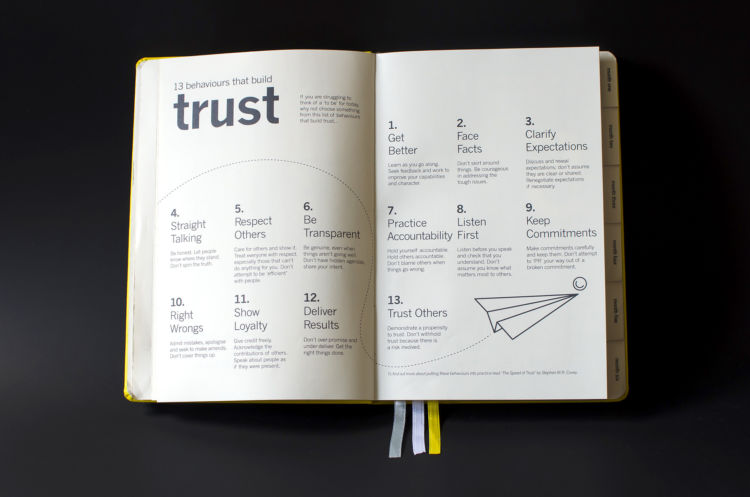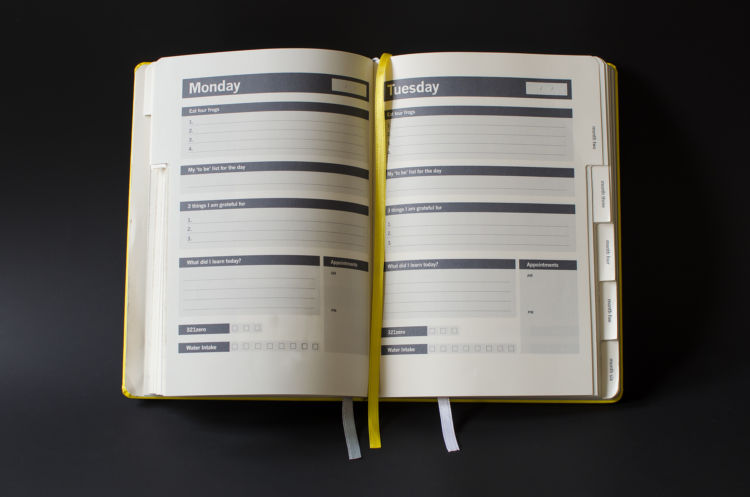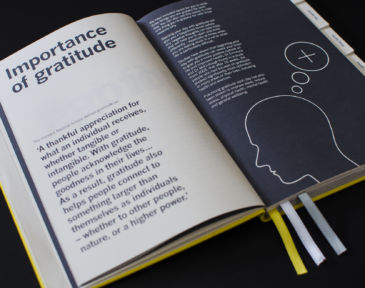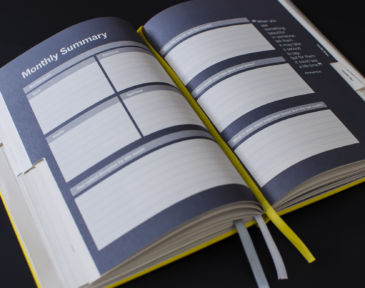We have recently created The Happy Learning Journal for Happy who have been providing award-winning learning in leadership, management, personal development, IT skills and software roll-outs since 1987. All this with the aim of creating better, more enjoyable and efficient workplaces.
We are seeing more and more emphasis being placed on workplace cultures, how to improve them and measuring how this can make a difference. A happy workplace leads to greater efficiency and less attrition throughout the business. We have had the first-hand experience of the effectiveness of this investment when creating workplace environment projects for organisations like Twitter, Skyler London, and KP Snacks that have brought to life the culture and personality of each company. We are now doing this ourselves with our own office refurbishment – watch this space!
The Happy journal is a fun individual personal booklet given to staff that is a guide on how to better organise your time, day to day activities, emails and more, with examples of best practice. As time demands and workloads on staff are becoming greater, putting simple processes in place that help ease these pressures makes good business sense. The journal provides sections for individuals to fill in related to organising their time from a daily, weekly and monthly perspective.
Although a lot of the information in the Journal appears at first glance to be common sense, what is interesting is how little these basic principles are implemented as an ethos or process in a lot of organisations. The tone of voice is really important in any document of this nature to ensure it makes a connection and strikes a chord. The Happy Learning Journal is the full ensemble.
Our favourite little sound-bites include:
“If you commit to nothing, you’ll be distracted by everything. It removes the friction of starting. The biggest hurdle to finishing most tasks is starting them.”
“There is something magical about imposing limits upon yourself. The single best thing to do when you have too many ideas (or when you’re overwhelmed by everything you need to get done) is to prune your ideas and trim away everything that isn’t absolutely necessary.”
As you can see, common sense but how many times in the workplace do we see examples where people fail to put these principles into practice? So go on… eat that frog… we are!
